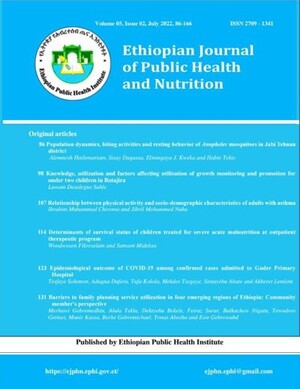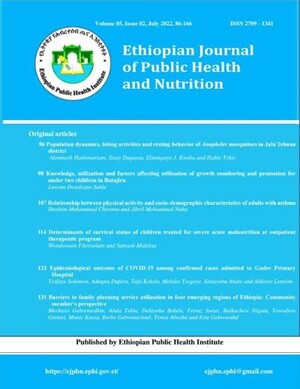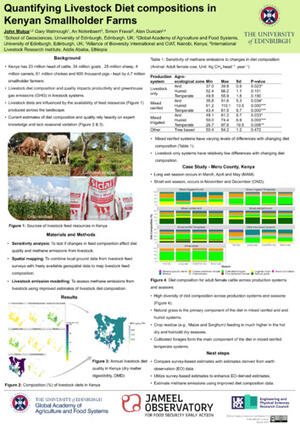
Risk factors for diarrheagenic Escherichia coli infection in children aged 6-24 months in peri-urban community, Nairobi, Kenya
Abstract
Escherichia coli commonly inhabits the gut of humans and animals as part of their microbiota. Though mostly innocuous, some strains have virulence markers that make them pathogenic. This paper presents results of a cross-sectional epidemiological study examining prevalence of diarrheagenic E. coli (DEC) pathotypes in stool samples of asymptomatic healthy children (n = 540) in Dagoretti South subcounty, Nairobi, Kenya. E. coli was cultured and pathotyped using PCR to target specific virulence markers associated with Shiga-toxin, enteropathogenic, enterotoxigenic, enteroaggregative, entero-invasive and diffusely adherent E. coli. Overall prevalence of DEC pathotypes was 20.9% (113/540) with enteropathogenic E. coli being the most prevalent (34.1%), followed by enteroaggregative E. coli (23.5%) and Shiga-toxin producing E. coli (22.0%) among positive samples. We found evidence of co-infection with multiple pathotypes in 15% of the positive samples. Our models indicated that at the household level, carriage of DEC pathotypes in children was associated with age group [12–18 months] (OR 1.78; 95%CI 1.03–3.07; p = 0.04), eating matoke (mashed bananas) (OR 2.32; 95%CI 1.44–3.73; p = 0.001) and pulses/legumes (OR 1.74; 95%CI 1.01–2.99; p = 0.046) while livestock ownership or contact showed no significant association with DEC carriage (p>0.05). Our findings revealed significant prevalence of pathogenic DEC circulating among presumptive healthy children in the community. Since there has been no previous evidence of an association between any food type and DEC carriage, unhygienic handling, and preparation of matoke and pulses/legumes could be the reason for significant association with DEC carriage. Children 12–18 months old are more prone to DEC infections due to exploration and hand-to-mouth behavior. A detailed understanding is required on what proportion of positive cases developed severe symptomatology as well as fatal outcomes. The co-infection of pathotypes in the rapidly urbanizing environment needs to be investigated for hybrid or hetero-pathotype circulation that have been implicated in previous infection outbreaks.
Citation
Okumu, N.O., Ngeranwa, J.J.N., Muloi, D.M., Ochieng', L., Moodley, A., Mutisya, C., Kiarie, A., Wasonga, J.O., Watson, J., Amon-Tanoh, M.A., Cumming, O. and Cook, E.A.J. 2023. Risk factors for diarrheagenic Escherichia coli infection in children aged 6-24 months in peri-urban community, Nairobi, Kenya. PLOS Global Public Health 3(11): e0002594.










